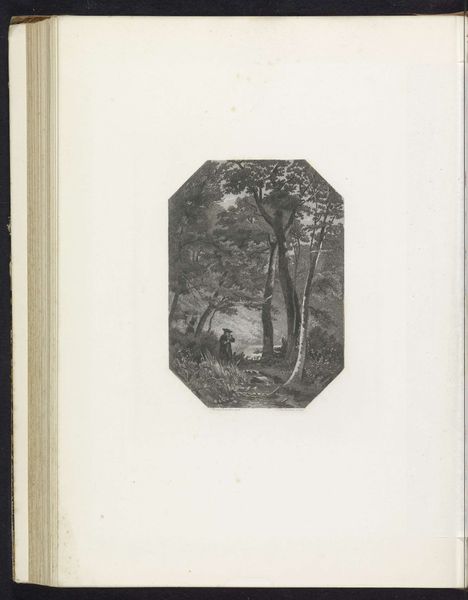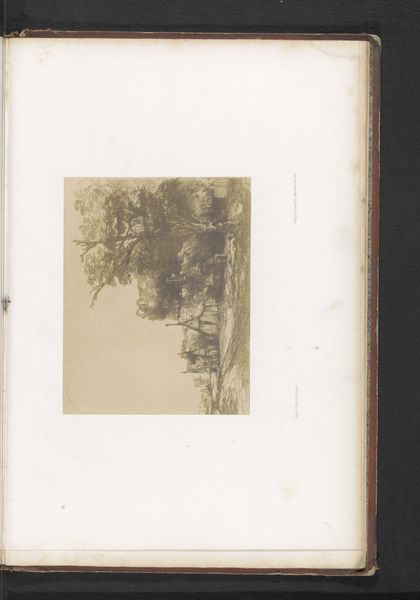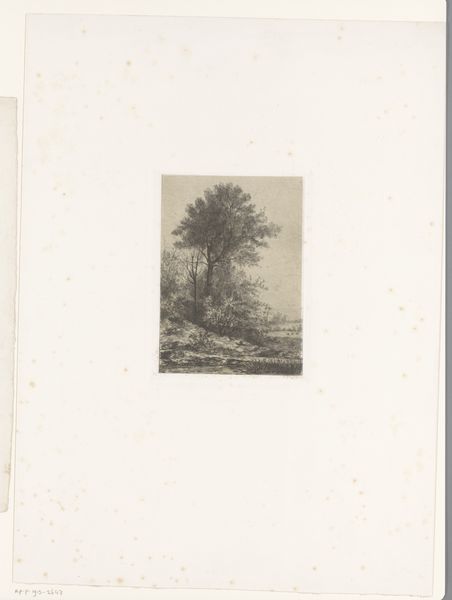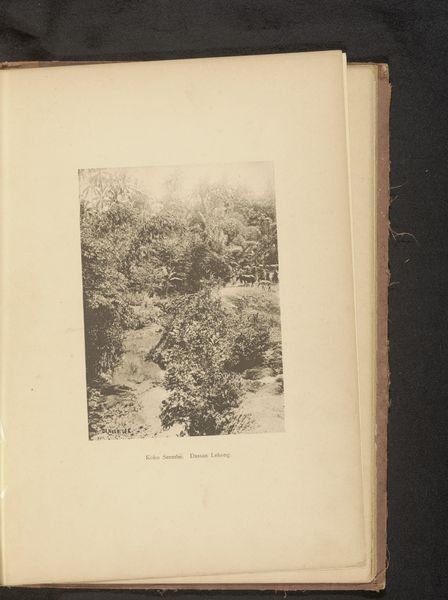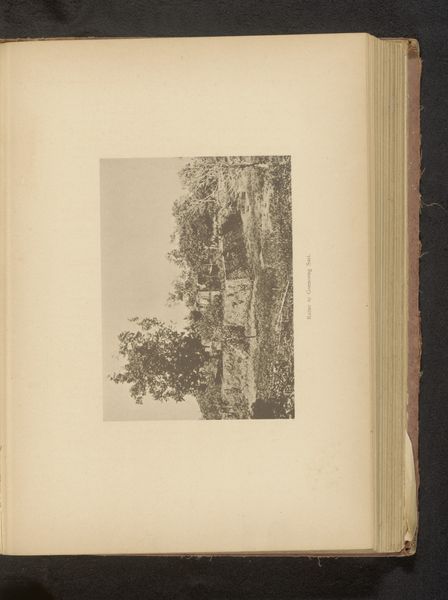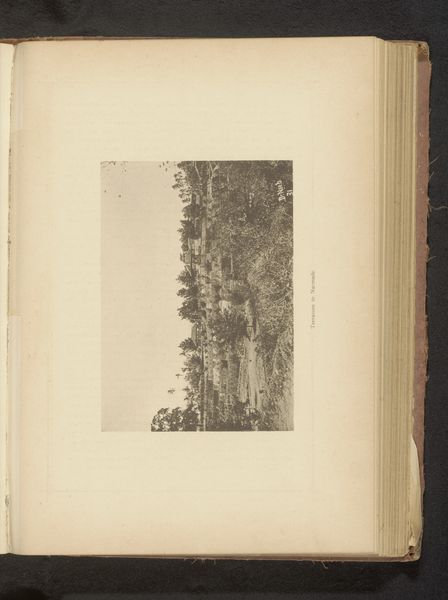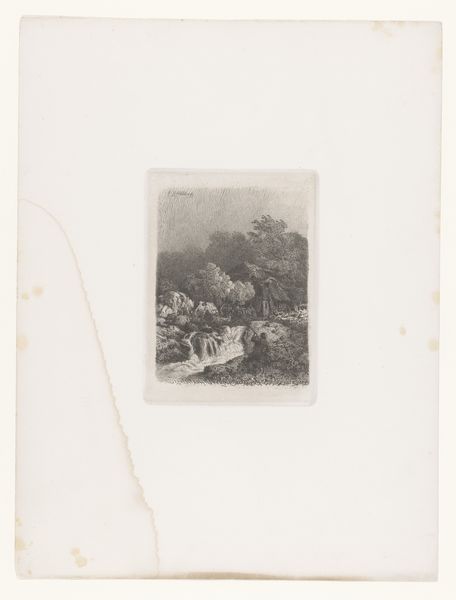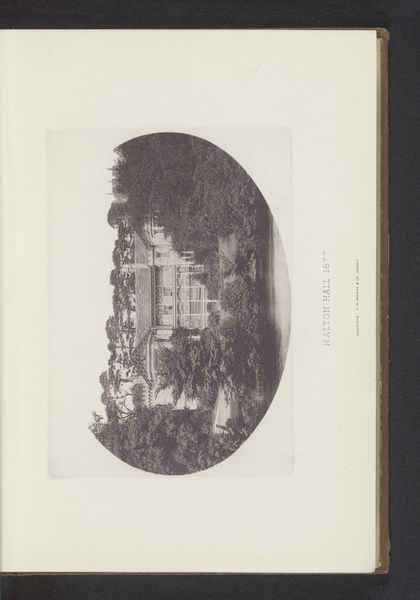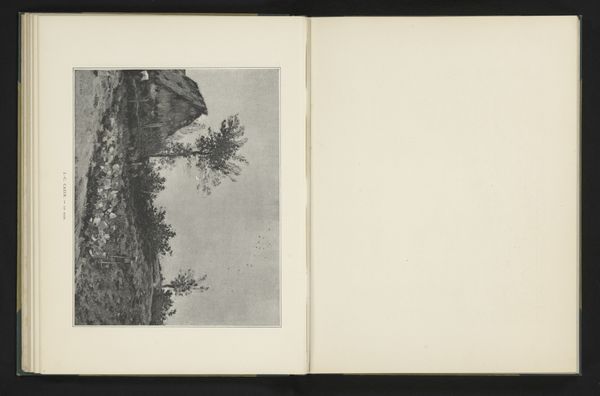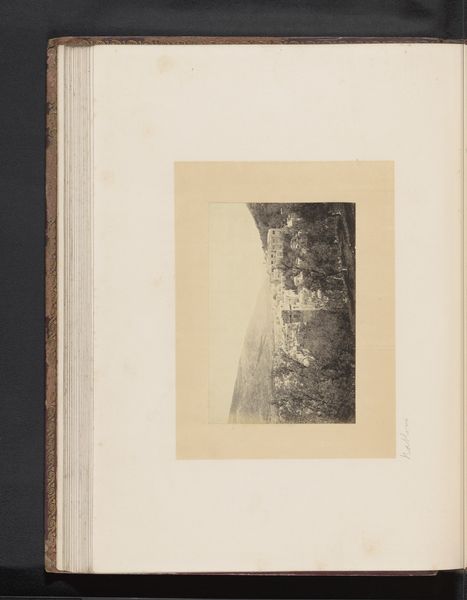
drawing, print, etching, paper
#
drawing
# print
#
etching
#
landscape
#
paper
#
coloured pencil
Dimensions: height 240 mm, width 190 mm
Copyright: Rijks Museum: Open Domain
Curator: Welcome. Before us is a print attributed to Willem Steelink, titled "Jacob van Ruysdael, ca. 1670," and believed to have been created between 1865 and 1870. The etching on paper evokes, perhaps unsurprisingly, the landscapes of its namesake. Editor: My initial impression is one of stillness, but with a hint of foreboding. The monochromatic palette lends a solemn air, while the somewhat severe architectural geometry of the building jars against the unruly organic forms surrounding it. It presents a stark reminder of the human imposition on nature. Curator: Steelink expertly uses the etching technique to create varied textures and tonal ranges. Observe the meticulous detail in the rendering of foliage compared to the rough-hewn appearance of the building’s siding, and consider how this contrast manipulates space and focus in the composition. Editor: Indeed. The placement of the figures seems deliberate—almost alienated from the landscape itself, certainly marginalized to the pictorial periphery. This could suggest commentary on the status of the figure relative to larger forces in the 19th century: industry, the natural environment, societal change. The solitary man perhaps speaks to emerging and changing concepts of class in the Dutch landscape tradition. Curator: Your reading is not unfounded. However, before we begin framing artwork with complex historical overlays, is it necessary to note the composition's sophisticated exploitation of chiaroscuro? Notice how strategically Steelink uses light and shadow to sculpt forms and guide our eyes? It's pure visual poetry. Editor: Yes, of course, though the 'poetry' you identify can’t be divorced from the material and historical circumstances surrounding this image, can it? Steelink didn't work in a vacuum. The image invites us to reflect not only on its form but also its engagement with broader questions of environmental responsibility and social alienation that continue to be extremely relevant today. Curator: A persuasive perspective. By recognizing how Steelink plays with conventional composition strategies, he ultimately elevates this etching above mere technical reproduction and situates it as an enduring landscape tradition. Editor: Ultimately, the image compels us to grapple with questions about place, labor, and social identity across centuries.
Comments
No comments
Be the first to comment and join the conversation on the ultimate creative platform.
